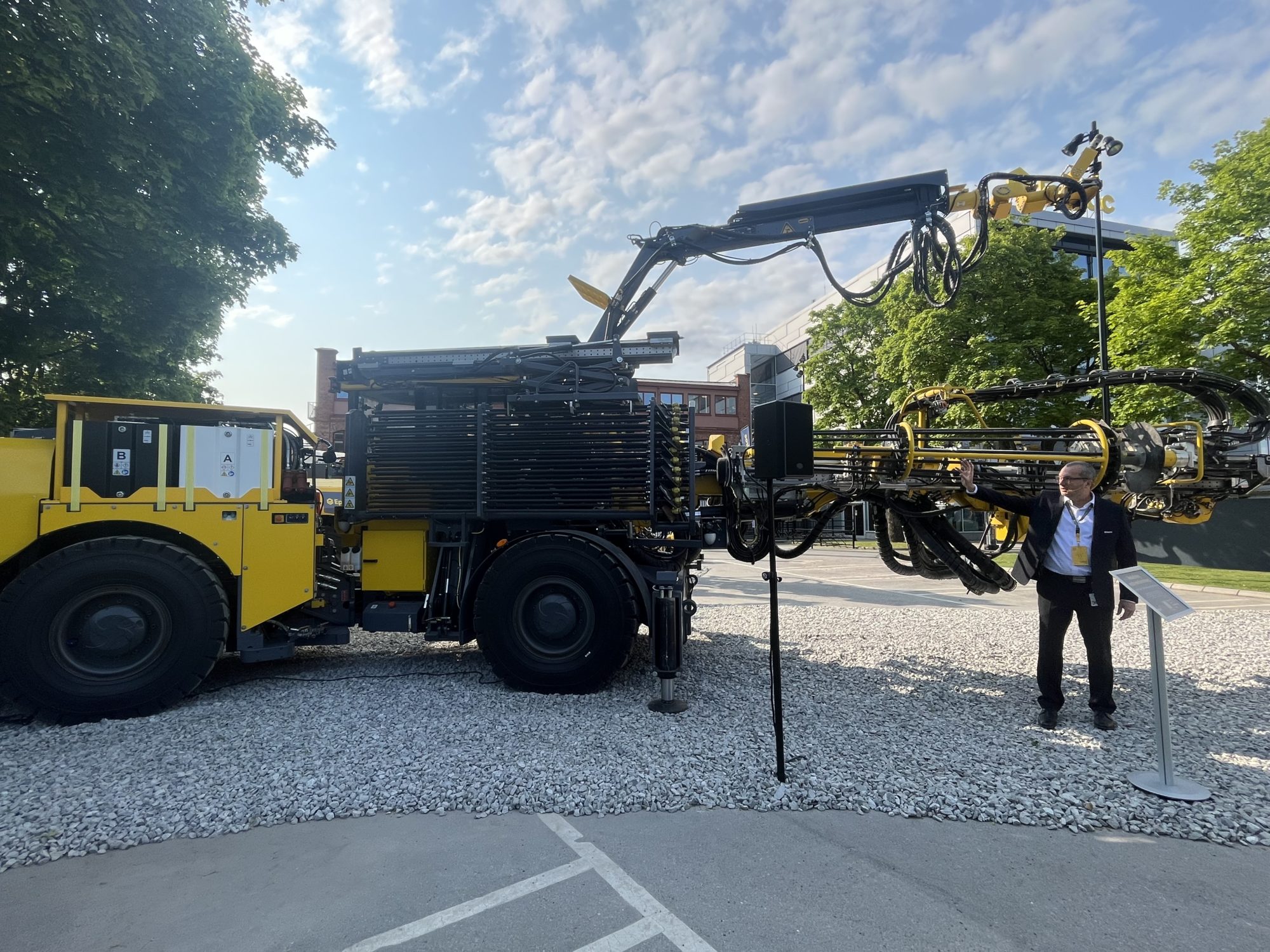At the Epiroc World Expo 2023 in Orebro, Sweden, attended by IM, Peter Bray, Epiroc Global Product Manager – Rock Reinforcement Equipment presented the latest Boltec E10 S ABR – the latest and most advanced incarnation of its Boltec E10 and M10 models first introduced in 2021, which introduced previously unavailable autonomous functionality to full mechanised bolting. In this case the ABR stands for Auto Bolt Reload.
Bray stated: “Those of you that have seen a Boltec before – there are a lot of similarities but also some important differences in the bolter carrier magazine. We have the ability to have 44 bolts in the magazine, using an overhead gantry to pick up four bolts at a time and drops them into the feed magazine where a total of eight bolts can be held.”
The overall design of this set-up began in 2016, with the first proof of concept machine delivered to LKAB’s Kiruna iron ore mine in northern Sweden in early 2020. “This was originally just a six month field trial but since that was completed successfully they decided to continue to rent that machine, which is still in operation today more than three years later.”
From that work, Bray said it has seen that the reloading system works very well and is very reliable. “The heart and soul of the machine is the bolts themselves – self drilling anchors – used with a pumpable resin.” The back of the machine has two tanks – one white, one black. These contain the two main components of a polyurea silicate resin – Epiroc uses Weber Mining’s POTENTIA® THIXO – and it isn’t until the components are mixed together that the chemical reaction actually starts.
There are two individual gear pumps that pump the components via hoses to the mixing point, with the pumps controlling the flow and pumping pressure at all times – and they are controlled via the Boltec’s Rig Control System (RCS). If anything is out of the set parameters, pumping can be stopped immediately. The components are mixed using static mixers that fold them together over and over again until you have a complete mix. The mixed resin is pumped via an injection cup that is held against the base of the SDA bolt with approximately 500 kg of feed force to ensure a good injection seal as well as pushing the bolt and plate hard up against the rock surface. The mixed resin flows up inside the bolt via the flushing hole and then out through the drill bit to fill the bolt hole from the top down. When resin is seen coming out from behind the plate, it is an indication that all cracks and voids inside the bolt hole are filled and that the bolt is fully encapsulated.
There is one extra element on this machine which makes it all repeatable. “After every injection sequence, we flush the static mixer element with biodegradable grease. If this was not done, the remaining resin inside the mixer element would harden resulting in more or less a one use item. The flushing grease is very effective, with up to 300-500 injection sequences before we need to change out the mixer element.”
The machine at the Epiroc World Expo 2023 was a new prototype bound for Boliden’s Garpenberg Mine, Sweden. “What we are going to be doing there is building on what we already know works – the mechanised bolt reloading system. We also did a field trial in 2022 at Boliden’s Kristineberg Mine which was primarily to test the new machine software for automated drilling and installation of bolts. Now we will combine the two together for operation of the ABR at Garpenberg starting in August 2023.”
The machine will be used for autobolting. It also has the same teleremote cameras that are used on Epiroc Simba production drills. Bray concludes: “When it comes to the automation of bolting – we have had the technical ability to do it for many years – the first fully autonomous Simba was running in the early 1990s as well as the first Simba teleremote control system. Boomers have had the ability to conduct automated face drilling since the mid-1990s. The bolts themselves where the remaining missing piece. Because when we are installing bolts, especially in bad ground conditions, if you are trying to shoot resin cartridges into a partially broken hole with some smaller rocks inside, the cartridge gets stopped so you lose the ability to autonomously bolt. Misalignment if you are trying to bolt through mesh is another problem. But by using a self drilling anchor or SDA, the bolt is the drill string – you drill it in and inject it with resin – there is no misalignment as the bolt stays centred at all times. You also aren’t worried about pushing something past fractured rock. It was the use of SDAs with pumpable resin that opened the door for autonomous bolt installation.”
Other features of the machine displayed in Orebro included a mesh handling boom, which picks up sheets of mesh and holds them in place for bolting through them. It is capable of many degrees of movement through multiple rotation units. As an example, LKAB Kiruna has used its machine for a lot of rehab work in an area damaged by a seismic event so they can install mesh with no one having to go in front of the Boltec. At Kiruna an operator has also never had to once come out of the cab to manually load the feed magazine. The next stage will be moving the operator to a remote office for tele-remote operation.











